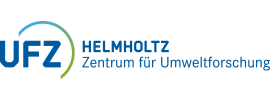Details zur Publikation |
| Kategorie | Textpublikation |
| Referenztyp | Zeitschriften |
| DOI | 10.1016/j.yrtph.2013.05.007 |
| Titel (primär) | A comparative survey of chemistry-driven in silico methods to identify hazardous substances under REACH |
| Autor | Nendza, M.; Gabbert, S.; Kühne, R.
|
| Quelle | Regulatory Toxicology and Pharmacology |
| Erscheinungsjahr | 2013 |
| Department | OEC |
| Band/Volume | 66 |
| Heft | 3 |
| Seite von | 301 |
| Seite bis | 314 |
| Sprache | englisch |
| Keywords | QSARs; Read-across; Structural alerts; Applicability domain; Consensus; Cost-efficiency; PBT; CMR; Endocrine disruption; Skin sensitisation |
| UFZ Querschnittsthemen | RU3; |
| Abstract | This paper presents an inventory of in silico screening tools to identify substance properties of concern under the European chemicals’ legislation REACH. The objective is to support the selection and implementation of appropriate tools as building blocks within integrated testing strategies (ITS). The relevant concerns addressed are persistence, bioaccumulation potential, acute and long-term aquatic toxicity, PBT/vPvB properties ((very) persistent, (very) bioaccumulative, toxic), CMR (carcinogenicity, mutagenicity, reproductive toxicity), endocrine disruption and skin sensitisation. The inventory offers a comparative evaluation of methods with respect to the underlying algorithms (how does the method work?) and the applicability domains (when does the method work?) as well as their limitations (when does the method not work?). The inventory explicitly addresses the reliability of predictions of different in silico models for diverse chemicals by applicability domain considerations. The confidence in predictions can be greatly improved by consensus modelling that allows for taking conflicting results into account. The inventory is complemented by a brief discussion of socio-economic tools for assessing the potential efficiency gains of using in silico methods compared to traditional in vivo testing of chemical hazards. |
| dauerhafte UFZ-Verlinkung | https://www.ufz.de/index.php?en=20939&ufzPublicationIdentifier=13916 |
| Nendza, M., Gabbert, S., Kühne, R., Lombardo, A., Roncaglioni, A., Benfenati, E., Benigni, R., Bossa, C., Strempel, S., Scheringer, M., Fernández, A., Rallo, R., Giralt, F., Dimitrov, S., Mekenyan, O., Bringezu, F., Schüürmann, G. (2013): A comparative survey of chemistry-driven in silico methods to identify hazardous substances under REACH Regul. Toxicol. Pharmacol. 66 (3), 301 - 314 10.1016/j.yrtph.2013.05.007 |
|
